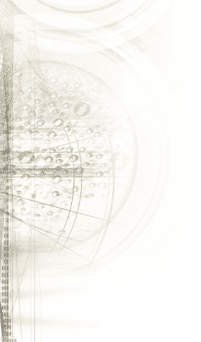
Multimedia
Design 1 - Narrative Design
Multimedia presentations have the ability to immerse an audience in the
content, captivate their imagination and wow them with your message. The
impact is much greater than can be achieved with a PowerPoint slide show.
But, to transform a presentation into something more powerful, the application
must be designed around a narrative.
Narratives provide a way to liven presentations, give them special, unique
qualities and make them enjoyable, fun and appealing to watch and use.
While good graphic design can make your content visually strong, developing
a narrative goes much further. It becomes a time-based theme to the multimedia
work.
In the simplest terms, a narrative is a story you incorporate into your
presentation. A strong story is one that develops and draws you in as
you move through it. Narratives can be subtle, direct, realistic or abstract.
A common narrative is a journey, which can be expressed in many ways.
A journey can be real or imaginary, physical or spatial. A presentation
on the Sydney Opera House may use the narrative of a physical journey
to give the user the experience of traveling through the building. Images
and animation could be used to give the illusion that the user is actually
walking through the building in the same way he/she would if actually
there.
Narratives can be abstract. You may use a texture, which recurs through
the presentation as a way to describe the tactile nature of your subject.
A successful narrative is one that allows for a developing idea that helps
explain and promotes the content over time.
When developing a narrative, it is useful to incorporate metaphors or
analogies to help explain your idea. For example, using the narrative
of a journey in relation to a presentation on Venice, gondolas and canals
can be used as metaphors for the interface elements. Clicking a gondola
could make it sail down a canal and take you (as the user) to a specific
part of the presentation and, in doing so, explore Venice. The gondola
and canals become navigational metaphors. In
the same way analogies are used to explain concepts, a navigational metaphor
helps explain how to interact with a presentation.
A presentation may include multiple navigational metaphors under one narrative.
For example, a multimedia presentation that promotes the work of an architectural
firm can follow a journey through their offices. The user may start at
the elevator and click on floor buttons to move to various rooms. In each
room, clicking on different objects can link to further information. Clicking
a drafting table may link to plans, clicking a computer may display digital
renderings. The navigational metaphor can change for different parts of
the presentation. The collection of various metaphors combines together
to form a composite narrative.
It is important to always make sure metaphors
are consistent and easily understood by your audience, as well as being
appropriate to your subject.
Click here to learn more about Multimedia
Design 2 - Graphic Design.
If you have any feedback on this article,
feel free to let us know at:
feedback@multimediacreative.com.au
©
2003 Multimedia Creative
